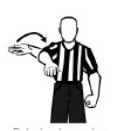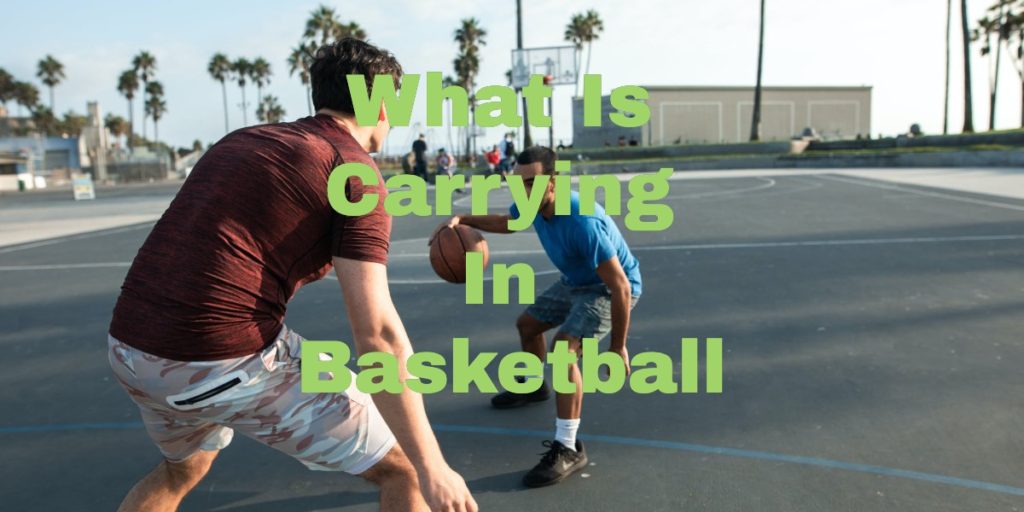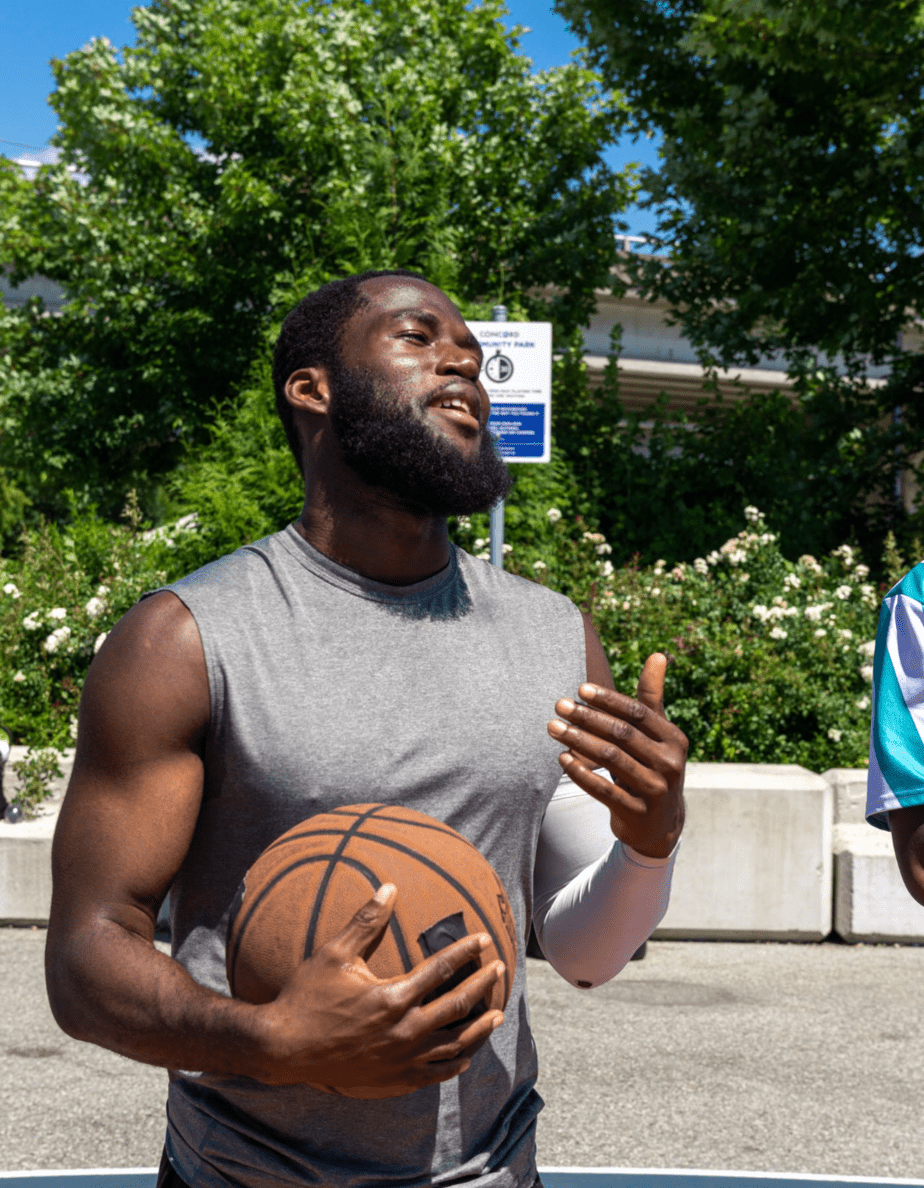What is a Carrying Violation in Basketball: Hand Signal, Video Example, Palming and How To Stop
Carrying is a violation in basketball. , also known as “palming the ball”. It occurs when the dribbling player’s hand comes underneath the ball or faces skyward and the ball comes to rest in one or both hands and then resumes dribbling. Essentially, gravity is no longer assisting the dribbler in handling the basketball.
Carrying in basketball is similar to a double dribble since the ball handler momentarily stops dribbling and then starts again dribbling. It also has similarities to traveling if the player is in motion while carrying the ball since they may take 3 steps without a legal dribble.
The post below gives you the hand signals, a video explanation, and the specific High School, NCAA, and NBA rule book definitions (from their respective rule books) so you can be prepared.
Carrying Hand Signal in Basketball
The hand signal made by a referee when carrying or palming is called is made by motioning with your arm and palm up and then flipping it to the palms down position. You want to give it a little bit of motion almost like you are palming the basketball yourself or like you are scooping sand into a pile.

Why Don’t They Call Carrying In Basketball?
A carrying call in basketball can be one of the toughest and most subjective for a basketball referee. The basketball carry rule can be difficult to interpret because the referee has to make a snap judgment of whether the player has their hand completely on the lower half of the ball (more of a palming call) and\or determine if the ball is completely stopped in the air. Click on the video below for some specific examples.
But, ultimately, they do call carries and the carrying violation in basketball can be controversial. They just may not get called as often as other penalties since they are subjective and, depending on the level of basketball, the referee may give you a little warning if you are getting into dangerous territory with your moves. All levels of basketball have a carrying rule but the NBA is notorious for not enforcing it as much.
Why Doesn’t The NBA Call Carrying
The players in the NBA are extremely skilled and it normally is not a point of emphasis in the NBA. The call may not get made as often but the rule is definitely on the books.
A player who is dribbling may not put any part of his hand under the ball and (1) carry
it from one point to another or (2) bring it to a pause and then continue to dribble again.
NBA Rule Book RULE NO. 10—VIOLATIONS AND PENALTIES Section II – Dribbling
How To Stop Carrying in Basketball
There are some ways you can get bailed out of a potential carrying the ball in basketball penalty. Let’s look at the NBA rule book on when you can regain your dribble:
A player may dribble a second time if he lost control of the ball because of:
- A field goal attempt at his basket, provided the ball touches the backboard or basket ring
- An opponent touching the ball
- A pass or fumble which touches his backboard, basket ring or is touched by another player.
If you realize you are going to carry the ball if you can get it to bounce off the hoop or another player or somehow get off a shot or pass to another player may be one option, albeit a poor one.
The better option is to just maintain a legal dribble or pick up the ball. Referees may have slightly different tolerance levels for what is carrying or palming in basketball, but having youth basketball players learn the fundamentals of dribbling is your best bet in avoiding a carrying violation.
High School and NCAA Definition of Carrying\Palming
The NFHS, the governing body of high school basketball, and the NCAA share the exact same definition of carrying the basketball. The excerpt below is from the NCAA rule book:
The dribble ends when:
The dribbler catches or carries/palms the ball by allowing it to come to rest in one or both hands;
NCAA Rule Book Section 13 – Dribble1 Article 4
Summary
Hopefully, you now understand the meaning of carrying in basketball. In review, a carrying penalty in basketball is considered a turnover in which the other team is given possession. Practicing dribbling in a legal matter is your best defense against a turnover. We hope this gives all basketball fans the information they need to interpret this complex call. Please check out some of our posts on basketball rules such as traveling or charging.

Troy Wright
I am a lifetime basketball enthusiast and loved playing basketball competitively through high school. I still try and play at least 3 times a week and explore all kinds of equipment and training to keep myself on the court and continually getting better. I am a college basketball fanatic and move onto the NBA when March Madness ends.
Meaningful conversations happening daily about training, recovery, and injury-specific rehabilitation as well as sport-specific discussions on playing, coaching and refereeing your favorite sport. We welcome experts and those with curious minds seeking answers.
Join The Stay On The Court Community!